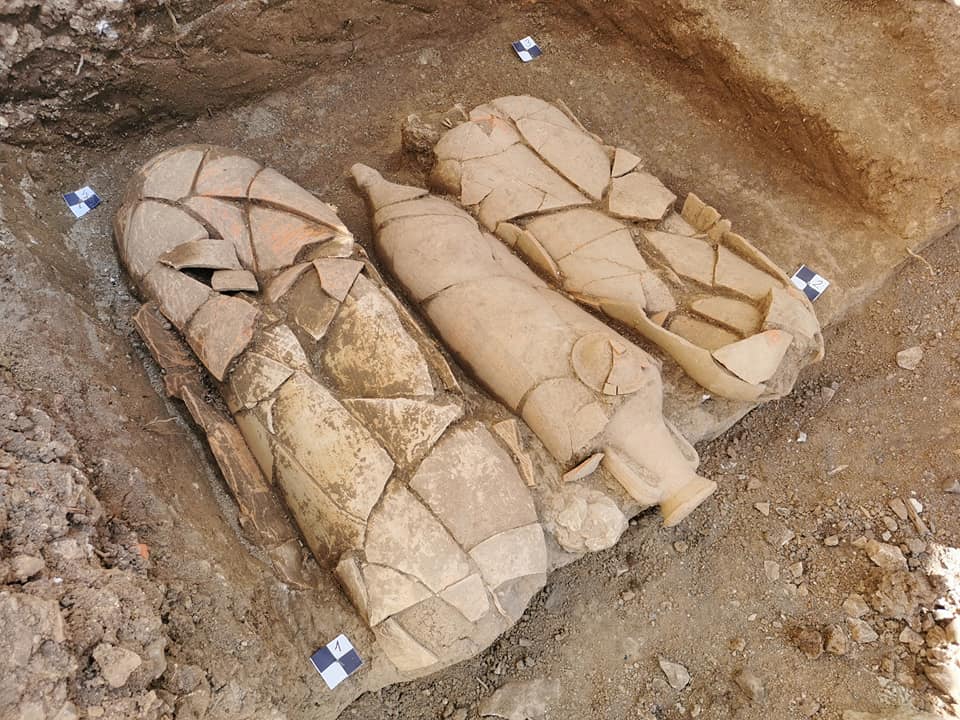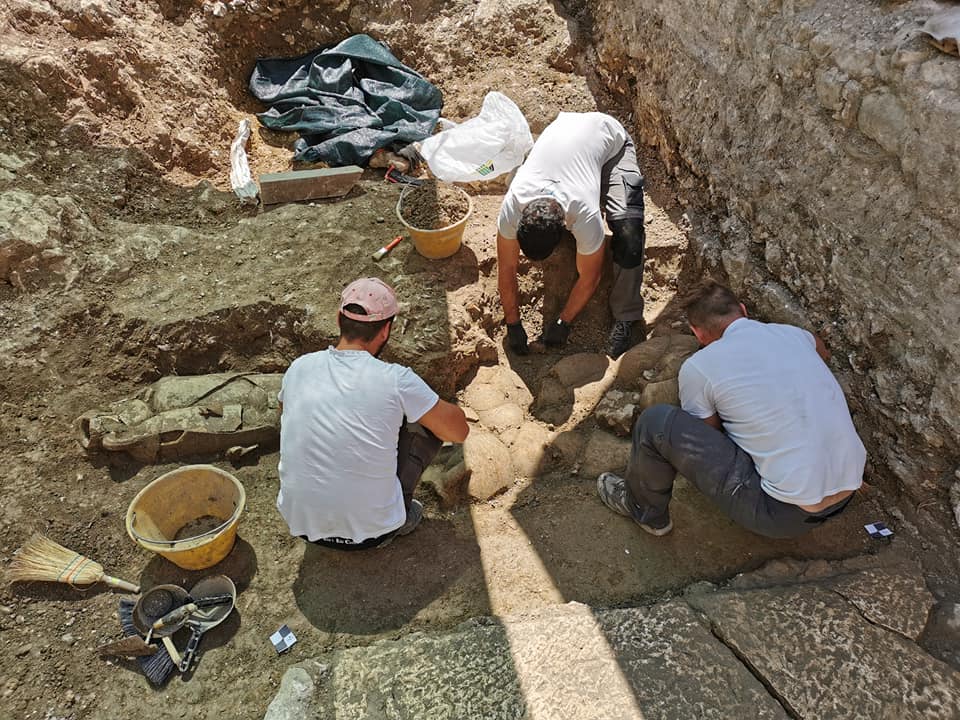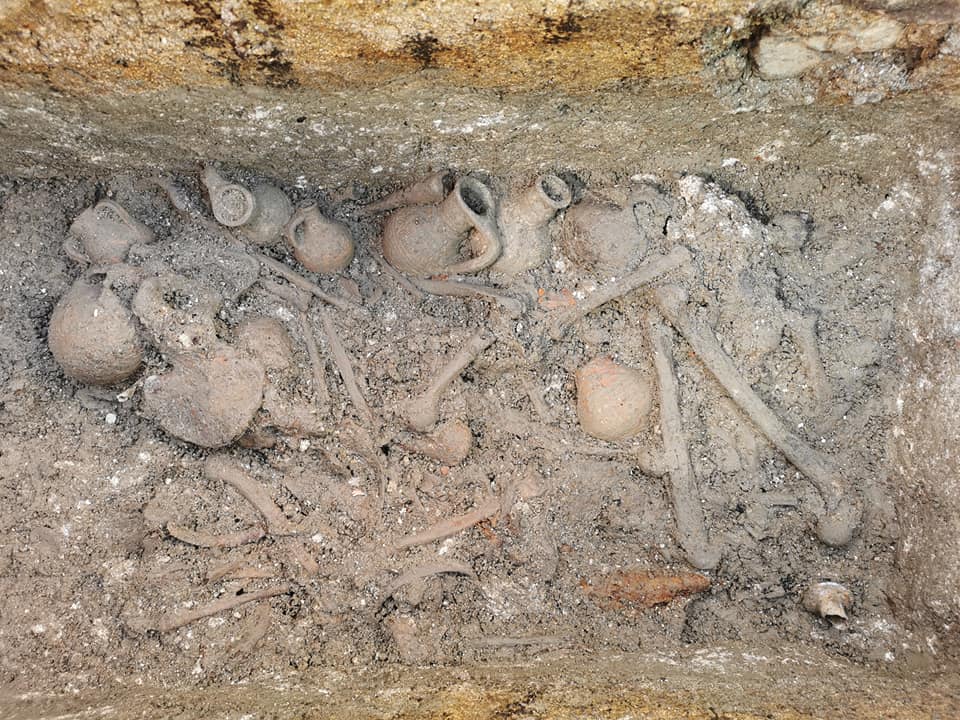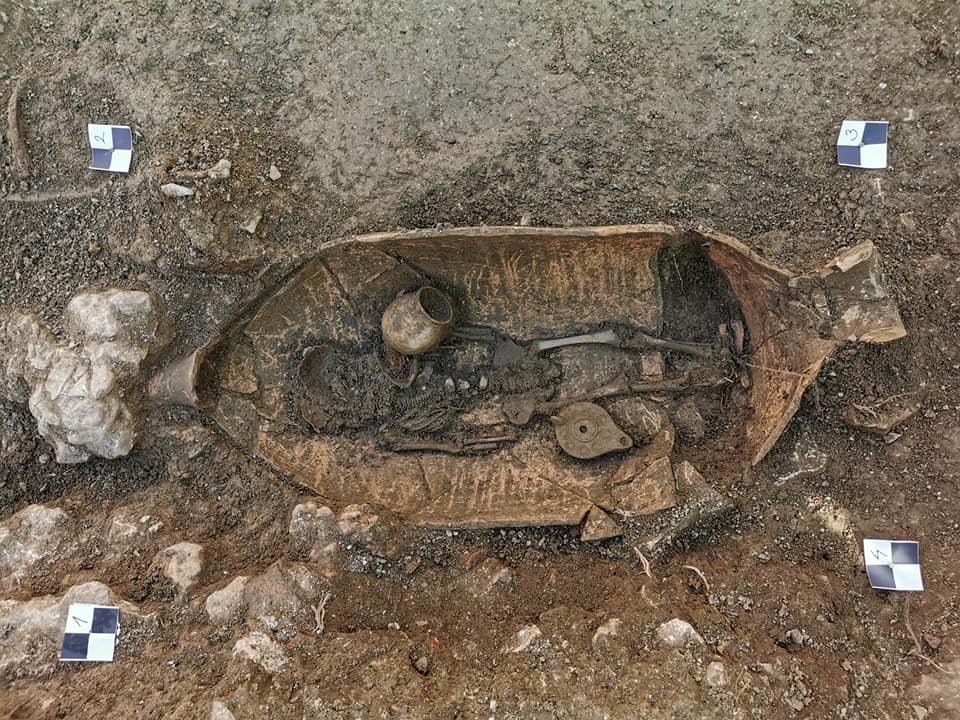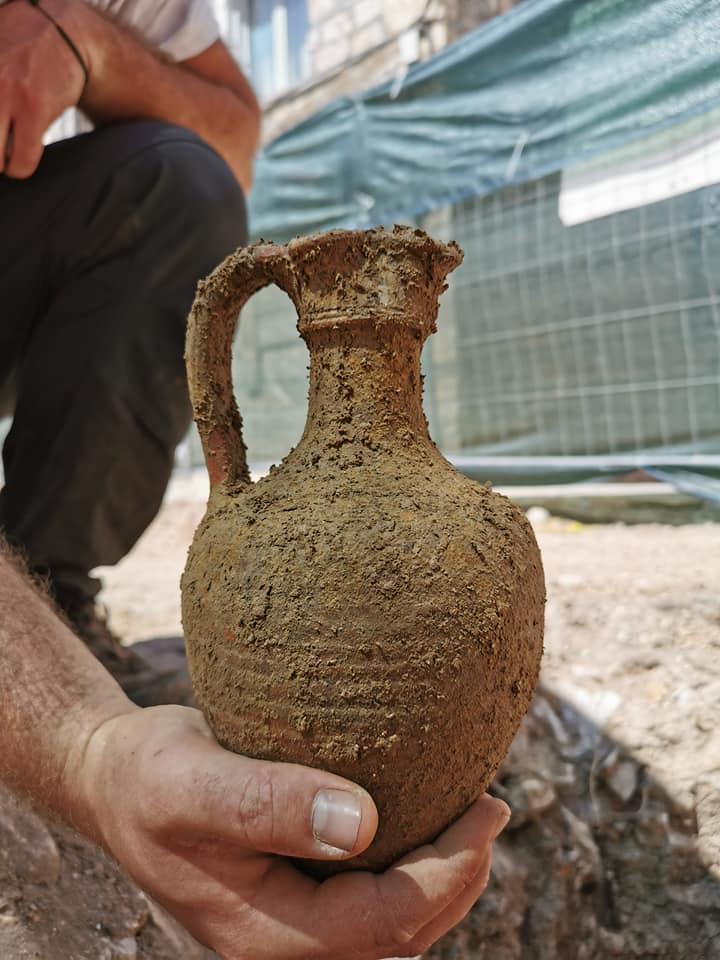Information
Ancient Greek Necropolis in Croatia Dates Back to Fourth Century AD
The gardens of a seventeenth-century Croatian palace were the unlikely setting for the recent discovery of an ancient necropolis where human remains were found buried in ceramic jars.
In June 2021, archaeologists unearthed a vast ancient necropolis, or burial ground, which dates back to some time between the fourth and fifth centuries AD when the area was still populated by Greeks who had settled there after having come under the control of the Roman Empire some time prior.
The beautiful Croatian island of Hvar has been continuously inhabited since the early Neolithic period. Greek settlers were the first to have founded colonies there as far back as 385 BC.
The Roman Empire had control of the area by the year 219 BC. Several hundred years later in the seventh century Slavic peoples, who were fleeing the mainland, arrived on Hvar.
Croatia Week, a local news outlet, reported that the team of archaeologists discovered the burial ground in the front garden of the Radošević Palace, an imposing 17th-century Baroque-style building on the western part of the island.
According to Smithsonian Magazine, the archaeological consulting company, called Kantharos Hvar, was in charge of the dig. They have spent two months examining the site as a result of the studies that must be undertaken before the construction of a new library and reading room can be started at the Palace.
The researchers stated in an announcement that they had discovered a total of twenty graves in the necropolis, along with the skeletal remains of 32 individuals, in an area measuring 700 square feet.
In the course of their dig in the Palace gardens, archaeologists also uncovered a fragment of a stone wall dating back to the second century AD and a city gate which they believe is from the late fifth century.
Other spectacular findings include amphorae for transporting wine and olive oil, along with ceramic jugs and lamps and even glass bottles and containers. Some coins were also uncovered at the site.
Kantharos says that these discoveries have prompted researchers to believe that the palace is “the most important and richest site” on the island of Hvar.
The Radošević Palace was constructed between 1670 and 1688 for a wealthy family, according to Ambroz Tudor, who was part of the Kantharos team in charge of the dig, in his 2011 study of the site.
Its ornate stone balconies and “lavishly decorated façade openings” make the structure a stunning example of Baroque architecture on the island, Tudor states.
Experts found tombs ranging from simple structures to elaborate buildings which even had their own with roof tiles, according to an article in the publication ARTnews, published this week.
As seen in a great many necropolises in Greek antiquity, the remains on the island of Hvar were exceptionally well-preserved, with some of the skeletons interred in large jars, or pithoi, alongside a wealth of grave goods.
One tomb containing twelve skeletons was completely encased in stonework. The archaeologists state that further research is required to provide yet more details on funerary customs from the 2nd to 5th centuries, and the team has plans to conduct radiocarbon dating on the various layers of human remains, enabling them to pinpoint their exact dates.
Kantharos noted in statement that the blockbuster findings on the Croatian island provide new insight into “ceramic production as well as trade connections, through documented imports, some of which were first recorded on the Adriatic.”
The archaeologists, including Eduard Visković, Joško Barbarić, Marko Bibić, and Jure Tudor, who worked with Tina Neuhauser Vitaljic, Marine Ugarković, and Joseph Barack Perica, also discovered ramparts with a city gate that dates back to the 5th century AD and the stone wall that was built in the second century AD.
Although the exact ages of the individuals who were buried inside the pithoi are unknown at present, scholars say they are unsure exactly why ancient burials were conducted in this way.
Amanda Morrow of Radio France Internationale, in describing a similar find made on the Mediterranean island of Corsica earlier in 2021, noted that such burials were generally reserved for infants or children.
It is not only Greeks who used such burial practices, however, according to archaeologists. Yoav Arbel, an archaeologist who was part of a team that discovered a baby buried in a jar in the Israeli city of Jaffa, told Live Science’s Laura Geggel in December of 2020 “You might go to the practical thing and say that the bodies were so fragile, [maybe] they felt the need to protect [them] from the environment, even though [they are] dead.”
“But there’s always the interpretation that the jar is almost like a womb,” Arbel said, “so basically the idea is to return [the] baby back into Mother Earth, or into the symbolic protection of his mother.”
The Croatian news outlet Dalmacija Danas states that one of the last finds made during the dig at the Radošević Palace was the second-century-era wall, which was hidden in the very deepest layers of the site.
The findings made in June 2021 represent the second of such discoveries in Croatia. Archaeologists unearthed a Roman necropolis containing at least eighteen graves in the Croatian harbor town of Trogir in 2016.
In 2020, another team discovered two well-preserved, 2,000-year-old shipwrecks containing amphorae and pottery off the coast of Hvar, placing those sites firmly within the time of Greek settlement there.
Pithos burials found all across Ancient Greek world
Pithos burials have even been discovered as far away from Croatia as the ancient city of Antandros on the skirts of the Kaz Mountains in western Turkey.
Along with their primary use as giant containers for wine and oil, they are known to have been used as graves in that particular region since the sixth century BC. Locals in the region today call them “cubic tombs.”
Professor Gurcan Polat, an archaeologist at Ege University who was the head of the Antandros excavations, told Hurriyet that the Antandros necropolis functioned from the eighth century BC to the first century AD. The pithos tombs were amongst the burial types discovered in the area, he said.
“We have found two pithos burials used by the Greeks. Pithos burials are big potteries used to preserve the dead before inhumation and cremation. But none of them were made to be used as graves. They are normally used for storage. But they were used as graves from time to time,” he said.
“They were sometimes used as family burials. Two or three members of the same family were buried in these cubes. In one of these burials, we found the skeleton of a dog. I think a local of Antandros loved his dog so much and found this cube when trying to find a place for its body,” the professor said.
Category: English
News
Information
Key words:


